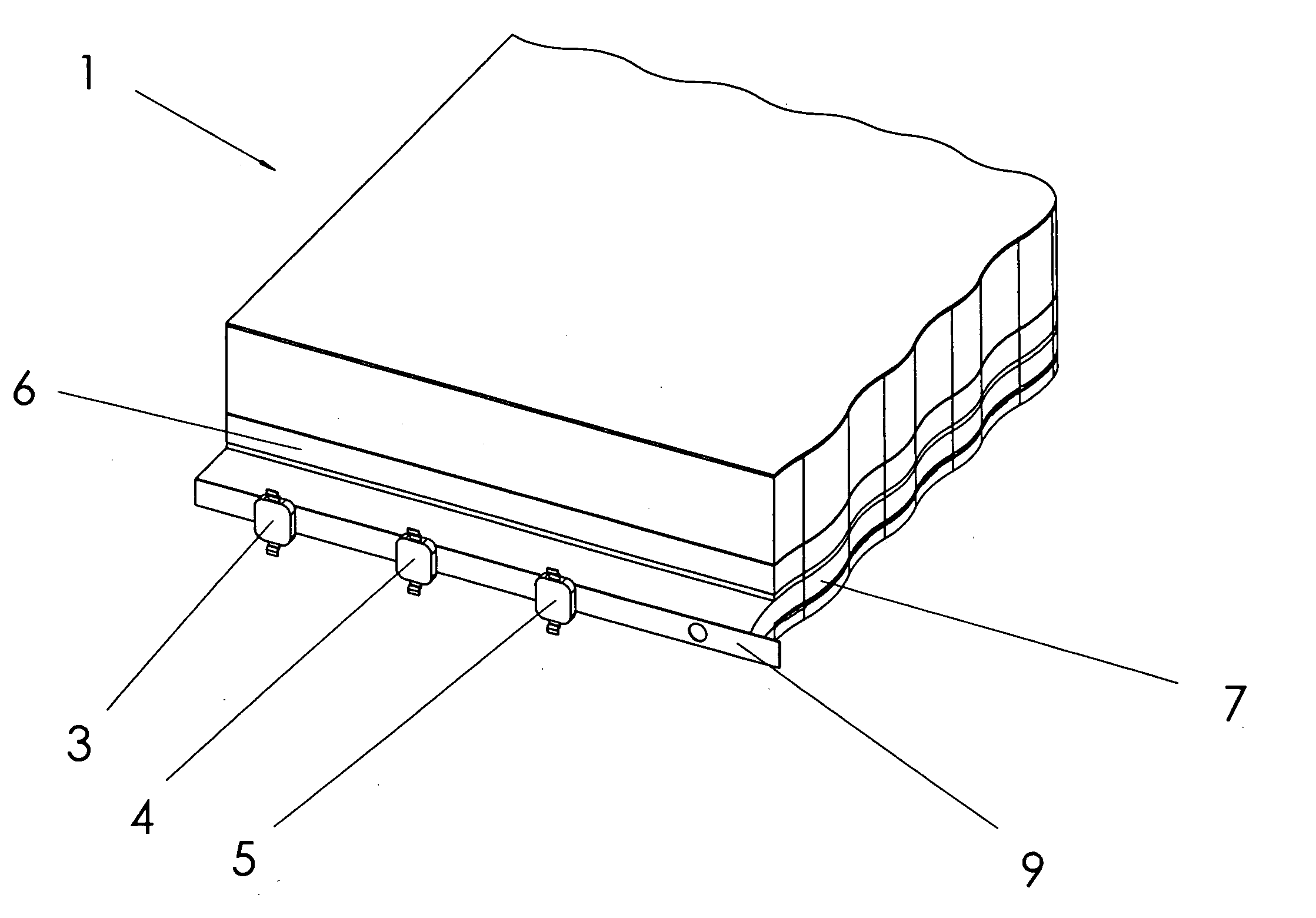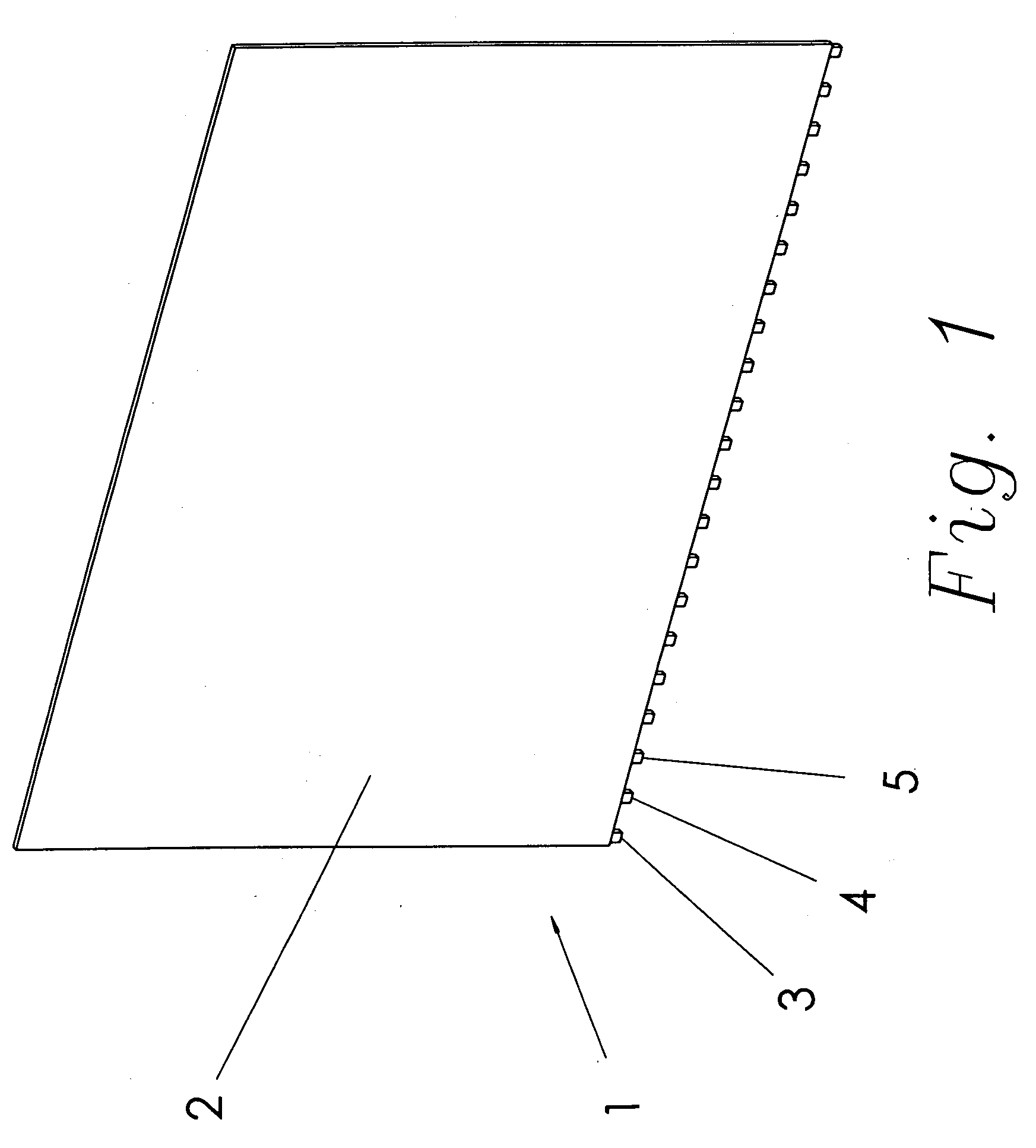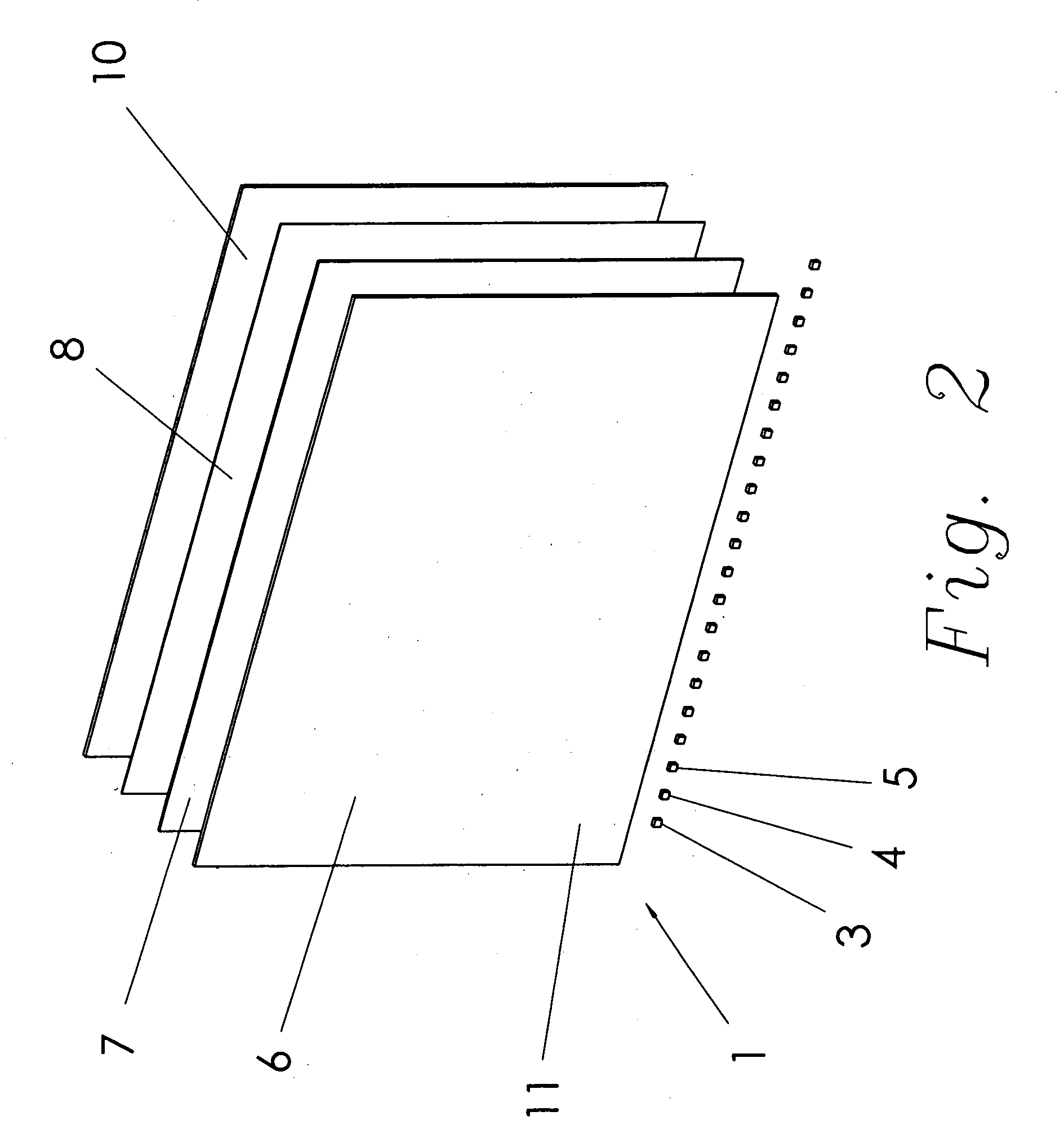Tir switched flat panel display
a flat panel display and switch technology, applied in the field of light display devices, can solve the problems of high energy consumption of lcd display technology, lack of performance of current art lcd displays in many ways, and inability to match the refresh rate of crts, etc., and achieve the effect of easy manufacturing, great resolution and fast switching
- Summary
- Abstract
- Description
- Claims
- Application Information
AI Technical Summary
Benefits of technology
Problems solved by technology
Method used
Image
Examples
case 1
[0071 is when the light guide (index 1.5) is adjacent to air (index 1)
case 2
[0072 is when the light guide (index 1.5) is adjacent a contact dome (index 1.5)
case 3
[0073 is when the light guide (index 1.5) is adjacent a low index material (index 1.35)
[0074]Calculating the angle A for these three cases:
A=arcsine(Ns / Nlg)
[0075]Case 1 For Ns=1, Nlg=1.50 A=arcsine(1 / 1.50)=41.8°
[0076]Case 2 For Ns=1.50, Nlg=1.50 A=arcsine(1.50 / 1.50)=90°
[0077]Case 3 For Ns=1.35, Nlg=1.50 A=arcsine(1.35 / 1.50)=64.2°
[0078]From these three calculations it can be seen that light will continue to reflect down the light guide 7 when the approach angle of the light rays 41 is less than 62.5 degrees from normal to the surface of the light guide 7. Case 1 and case 3 are conditions where light would TIR. In case 2, the light does not TIR. The light passes through the surface of the light guide 7 and continues along its original path through the contact dome 32.
[0079]It should be noted that the light guide 7 and the contact dome 32 may not have the same index of refraction. If the indexes of refraction are not equal, some refraction will take place at the interface of the light ...
PUM
 Login to View More
Login to View More Abstract
Description
Claims
Application Information
 Login to View More
Login to View More - R&D
- Intellectual Property
- Life Sciences
- Materials
- Tech Scout
- Unparalleled Data Quality
- Higher Quality Content
- 60% Fewer Hallucinations
Browse by: Latest US Patents, China's latest patents, Technical Efficacy Thesaurus, Application Domain, Technology Topic, Popular Technical Reports.
© 2025 PatSnap. All rights reserved.Legal|Privacy policy|Modern Slavery Act Transparency Statement|Sitemap|About US| Contact US: help@patsnap.com



